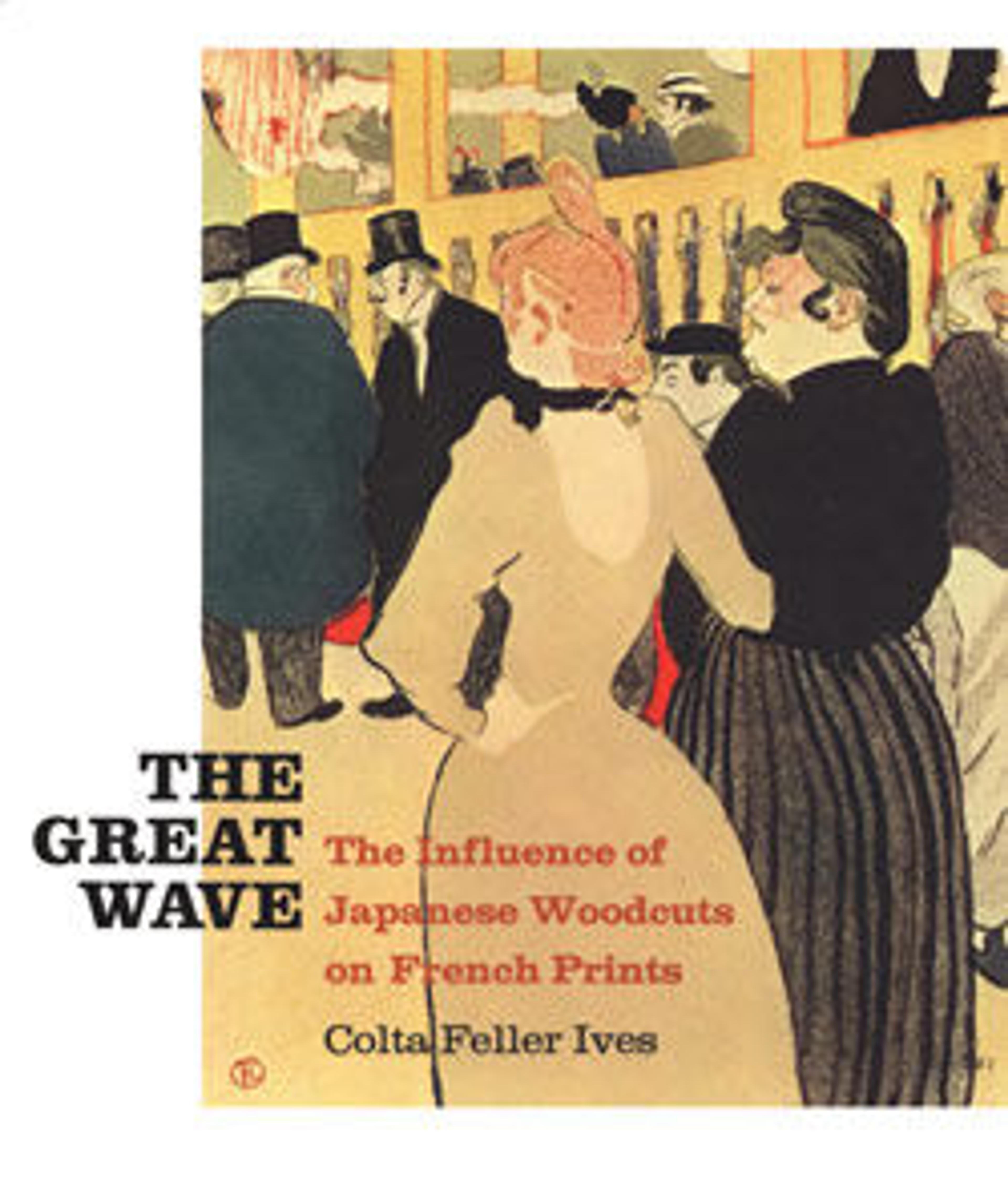The Bush Clover (Hagi)
Bush clover (hagi), a popular autumnal symbol, is associated with melancholy and unrequited love. A young woman plucks a branch from the purple-flowering bush. Her black kimono with a tie-dyed paulownia design and obi with a pattern of octagons and squares (shokkō) are covered with a peach-colored outer garment (katsugi). The folds of this garment and the gently curving branches of the hagi bush share the pensive mood. Her maid, holding the katsugi up out of the wet grass, turns away, discreetly avoiding her mistress's pain, a movement that increases the sense of the woman's isolation.
A waka poem by the thirteenth-century poet Fujiwara Kinmori appears in the cloud-shaped cartouche above and reads:
Bush Clover
My heart is withered,
even dew on the branches of bush clover is futile
in the autumn evening.
A waka poem by the thirteenth-century poet Fujiwara Kinmori appears in the cloud-shaped cartouche above and reads:
Bush Clover
My heart is withered,
even dew on the branches of bush clover is futile
in the autumn evening.
Artwork Details
- 萩
- Title: The Bush Clover (Hagi)
- Artist: Suzuki Harunobu (Japanese, 1725–1770)
- Period: Edo period (1615–1868)
- Date: ca. 1766
- Culture: Japan
- Medium: Woodblock print; ink and color on paper
- Dimensions: 10 7/8 x 7 7/8 in. (27.6 x 20 cm)
medium-size print (chu-ban) - Classification: Prints
- Credit Line: The Howard Mansfield Collection, Purchase, Rogers Fund, 1936
- Object Number: JP2442
- Curatorial Department: Asian Art
More Artwork
Research Resources
The Met provides unparalleled resources for research and welcomes an international community of students and scholars. The Met's Open Access API is where creators and researchers can connect to the The Met collection. Open Access data and public domain images are available for unrestricted commercial and noncommercial use without permission or fee.
To request images under copyright and other restrictions, please use this Image Request form.
Feedback
We continue to research and examine historical and cultural context for objects in The Met collection. If you have comments or questions about this object record, please contact us using the form below. The Museum looks forward to receiving your comments.
